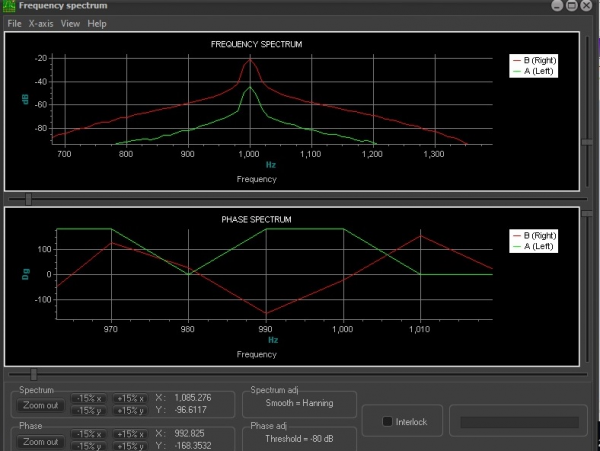Allow me to revive Tima's discussion on Adjust+. The phase angle was close to 0 deg for one channel and approx 180 for the other. The crosstalks matched to around 3-5 db.

I have a Shelter 901 and it shows exactly the same behavior, but it sounds bloody good even after I have owned it for well over 10 years and a couple of retips. In Tima's case I wonder if the cartridge sounds good at -1.5 deg azimuth?
Now a bit of theory. The phase difference should be in the range of either 0 - 360 or -180 - +180. Adjust+ only shows 0 - 180 deg. I am not sure if Dr Feikert has used the range -180 to +180 and then take the absolute value or what did he do something else. Does anyone have any inkling?
Also, Tima, have you solve the conundrum?
I have a Shelter 901 and it shows exactly the same behavior, but it sounds bloody good even after I have owned it for well over 10 years and a couple of retips. In Tima's case I wonder if the cartridge sounds good at -1.5 deg azimuth?
Now a bit of theory. The phase difference should be in the range of either 0 - 360 or -180 - +180. Adjust+ only shows 0 - 180 deg. I am not sure if Dr Feikert has used the range -180 to +180 and then take the absolute value or what did he do something else. Does anyone have any inkling?
Also, Tima, have you solve the conundrum?








